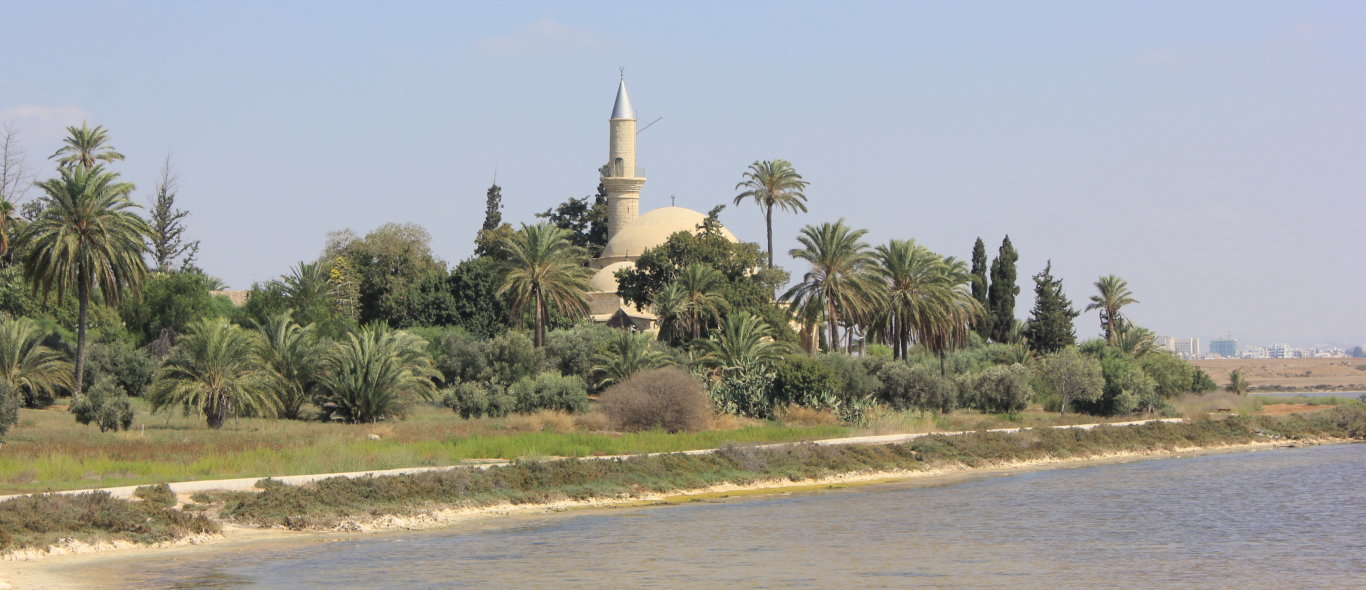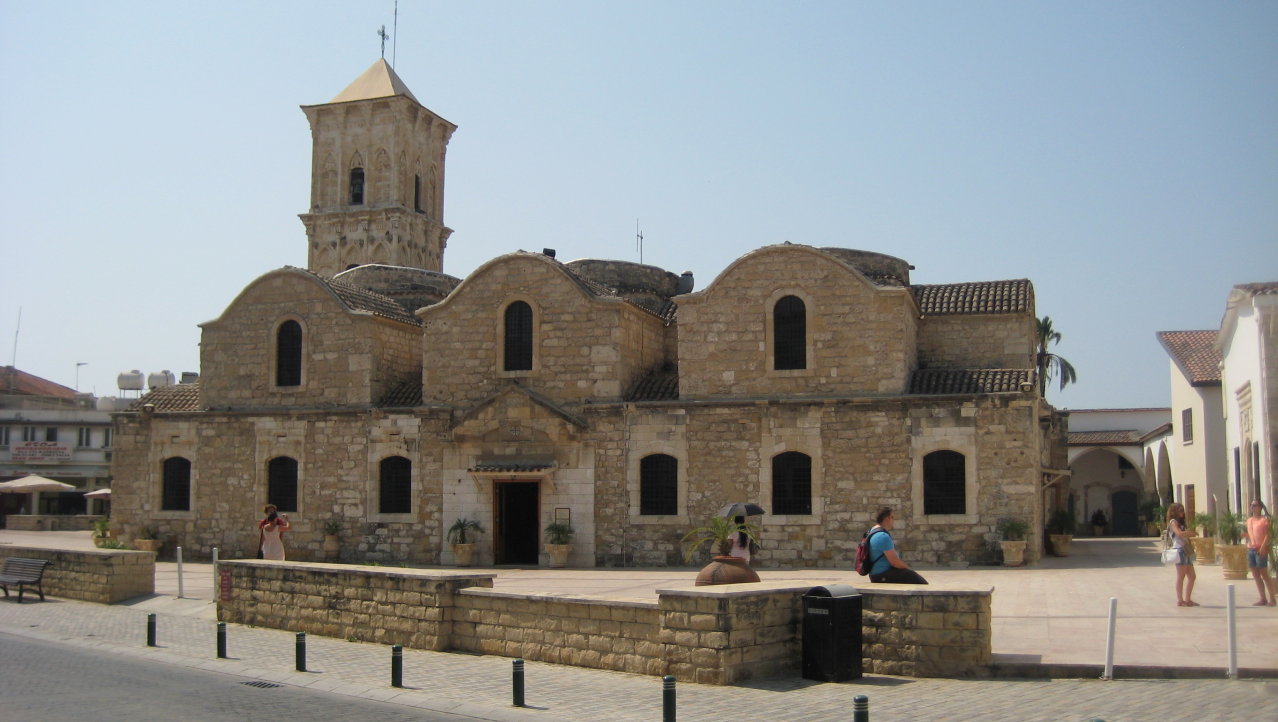
Engelstalig Travelreport over Cyprus
Engelstalig Travelreport over Cyprus
The Complete Mosaic of the Mediterranean
Kalimera, and welcome to the Mediterranean wonder that is Cyprus. Throughout the centuries, history has formed the 3rd largest island of the region into a magical haven that holds many delights. Situated in the Eastern Mediterranean and surrounded by three continents, Cyprus is a land where, in chronological order, the Greeks, Phoenicians, Persians, Romans, Byzantines, Arabs, Venetians, Ottomans and British, have all left their footprints taking advantage of the island’s great strategic location and abundant resources. As Cyprus has much to offer anyone, in any century, the time has come for us to discover the birthplace of Aphrodite…and her complete mosaic of beauty.
Cyprus’s name is derived from copper, a material for which the island is renowned. Since modern times, the prime income of the island has shifted from the mining industry to an economy based on tourism and service. Cyprus’s’ Nicosia is the world’s last divided capital. Before the Turkish invasion of the north in 1974, Cypriots, whether Muslim, orthodox Christian or Jew used to live in harmony, speaking Greek, Turkish or both! Nowadays, division by the green line that covers 20 % of the island causes a clear physical segregation (as well as cultural and mental distinctions) among its people.
It is wise to start your trip to Cyprus by arriving at Larnaca’s international Airport. This dynamic city sports everything your touristic heart may desire. The Phinikoudes (meaning ‘palmtrees’ in Greek) Promenade is the five-kilometer-long aorta of the city, lying parallel to a clean beach of the same name with shallow waters, ideal for children. On top of the entrance of the Castle of Larnaca, an Ottoman ‘Tugra’ from 1625 will welcome you. This medieval fort houses ceramics from the Byzantine era, as well as Ottoman military objects. From the fort on till the Fountain Europe Square, Larnaca shows its old and new colors in splendor. Walking northwards on the promenade, one will find every American franchise imaginable next to the many clubs and bars. Go beyond the lights and the music and you will find Larnaca a mostly quiet city. The Ermou shopping street boasts reasonable prices and is open till 20:00, but, surprisingly, the shops close down on Wednesday afternoons. The archeological museum of Larnaca provides a nice stop on one’s way to the ancient ruins of Kition (located 500m north). Larnaca itself is built atop these ruins; among them, one can find numerous statues and ceramics from historical periods beginning with theNeolithic age and up to and including the Roman era. The highlight of the city must be the 9th century St Lazarus Church, one of the best examples of Byzantine architecture. The biblical narrative recounts how, after he was awakened by Christ, Lazarus came to Cyprus (where he allegedly lived for thirty years). His tomb is said to lie under the altar of the church and is open to visit; just mind your head!
Another must-see in the Larnaca district is the Hala Sultan Teke; a vivid example of Ottoman presence in the area, this mosque (which is built over the tomb of Umm Haram) is the 4th holy Muslim pilgrimage site, dedicated to the godmother of Prophet Muhammad. The building is set in an oasis nearby the salt lake of Larnaca, where flamingos hibernate during the winter months. You drive back to the airport in a dream state after seeing its mirage-like image in the far distance.
Cyprus may remind you of Turkey or Greece, and its landscape may even resemble Tuscany (though Cyprus’s is a bit dryer), but in fact, the island is an outstanding presence in the Mediterranean. There are over a 1000 places to visit, from prehistoric Neolithic sites, to monasteries, temples, mosques, picturesque villages and quiet beaches with azure blue waters. The best months to visit are April till June and September till November, when the weather is milder. The damp summers tend to be scorching hot and humidity is high all over the island, especially in the area of Nicosia to Larnaca.
Though the Cypriots are not renowned for their openness, they are kind, helpful and usually polite, especially when you show interest towards their country. Their English is superb (even among the older generation) as result of implementation of the British educational system. As the ‘Cyprus Problem’ is still a major issue in the country, the inhabitants tend to see themselves as Cypriot, rather than as Greeks or Turks. Their heritage is a unique blend of the Eastern Mediterranean, a fact which is best represented in Cyprus’s wide assortment of culinary treats (like Dolmades, Humus, and Mousaka, but also Cypriot meat specialties like Kleftiko and Stifado, which are a must-try). Aside from these, the island offers all types of high-quality sea-food. Most interesting for your taste buds would be the domestic Haloumi cheese, which is made from sheep as well as goat milk, and has a distinct taste. In Cyprus, this cheese is a part of daily eating and appears at almost every meal. The grilled variant is especially delicious!
So whether you are a friend of Christ or Muhammad, whether you enjoy the excitement of hiking in Troodos or the tranquility of Mackenzie beach, whether you like to party in Agia Napa or discover mythology in Paphos, Cyprus and its wide range of attractions will not let you down! Records show tourists return after their first visit. The great amount of diversity on Cyprus not only makes the island a complete mosaic of the Mediterranean, it also makes it a place where there is something to be found for everyone; that’s why as you enjoy your final slice of Haloumi with salty black olives, you will wonder when the island of Aphrodite will summon you once more…






